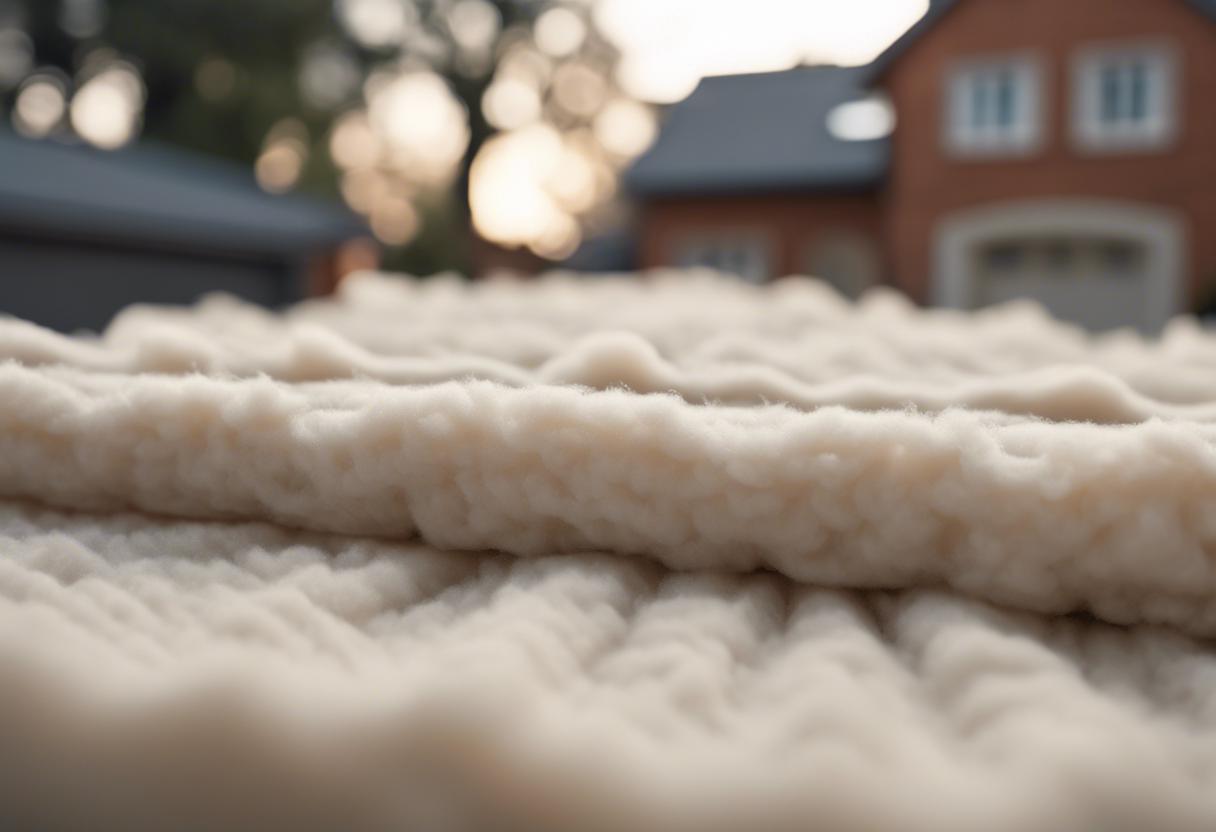Our vintage four-bedroom semi-detached house from the 1960s was equipped with external insulation. As part of the refurbishment, we took down the back wall and substituted it with flatly installed blocks, different from the usual approach of positioning them vertically or on the side. However, this change did not ensure the insulation effect we had anticipated. Our house features triple-glazed windows and doors that face north, and double-glazed ones facing south, in addition to an insulated attic. A heat-pump system was also set up by our qualified engineer and builders. Yet, the back bedrooms persist to be inhospitable and cold, and a new closet attached to the wall gives off a damp scent.
At the back of the ground floor, an extension was constructed, causing the upper rear wall insulation to end just a bit above the flat roof, forming an indentation, which appears to be a typical characteristic seen in external insulation.
Responding to the noticeable black damp on the bathroom walls and roof, an extractor vent is needed. The challenge is to find a permanent solution to this, rather than a temporary cosmetic fix that will only last until the damp issues reoccur. We are uncertain about which certified professional should be consulted for resolving these issues.
What seems to be the core issue here is condensation, which can be a result of inadequate insulation levels, insufficient heating, excessive moisture vapour, and poor ventilation.
We’ve added a new heating system, so given it’s properly installed and functional, it should provide ample heating. Following the addition of the new double and triple-glazed windows, as well as the external insulation, the insulation standard should be satisfactory.
You mentioned a ‘dip’ present in the insulation just over the roof, this was likely necessary to sidestep any interference with the wall-to-roof flashing. This, however, gives rise to a ‘cold bridge’. Ideal external insulation involves encapsulating the house entirely, void of any gaps. Nonetheless, retrofitting houses usually invites hindrances and issues that prevent achieving a flawless solution. Hence, some compromise on the insulation, marked by the indentation, seems to have been inevitable, and we are left with little choice but to accept this drawback.
Humidity and air circulation are the primary culprits of indoor condensation. People generate moisture in their daily activities like cooking, drying clothes or taking showers and it is unavoidable that a certain amount of moisture will be produced within a dwelling.
However, the most effective way to control condensation levels is ensuring adequate room ventilation, which can be easily achieved by simply opening windows. Yet this practice may prove difficult to maintain consistently due to busy everyday routines, thus making backup ventilation systems rather crucial.
In maintaining proper ventilation, conventional methods would include consistent opening of windows, vents in living spaces and bedrooms, as well as mechanical extraction fans fitted in bathrooms and kitchens. Entire air systems are now included in new homes, but retrofitting such systems may prove challenging. But a good mix of maintaining ongoing ventilation and employing mechanical extractor fans can help manage condensation effectively.
The black marks you’ve noticed are common signs of condensation, more evident between late autumn and early spring. This is often found in bathrooms, cooler rooms, or spaces with limited air flow such as wardrobes, behind picture frames or headboards. By increasing ventilation and decreasing humidity when possible, you can substantially mitigate or even eliminate your condensation issue.
As for who should confront this issue, any skilled tradesman who understands the situation and the end-goal would suffice. Alternatively, someone who can be directed by a chartered building surveyor or a similar professional with necessary understanding of the matter.
Val O’Brien is a member of Society of Chartered Surveyors Ireland and a chartered building surveyor.
This reader service column is offered for general informational purposes only. It is not intended as comprehensive advice. Professional or subject-specific guidance should be sought before taking or avoiding any action on basis of the content.

